

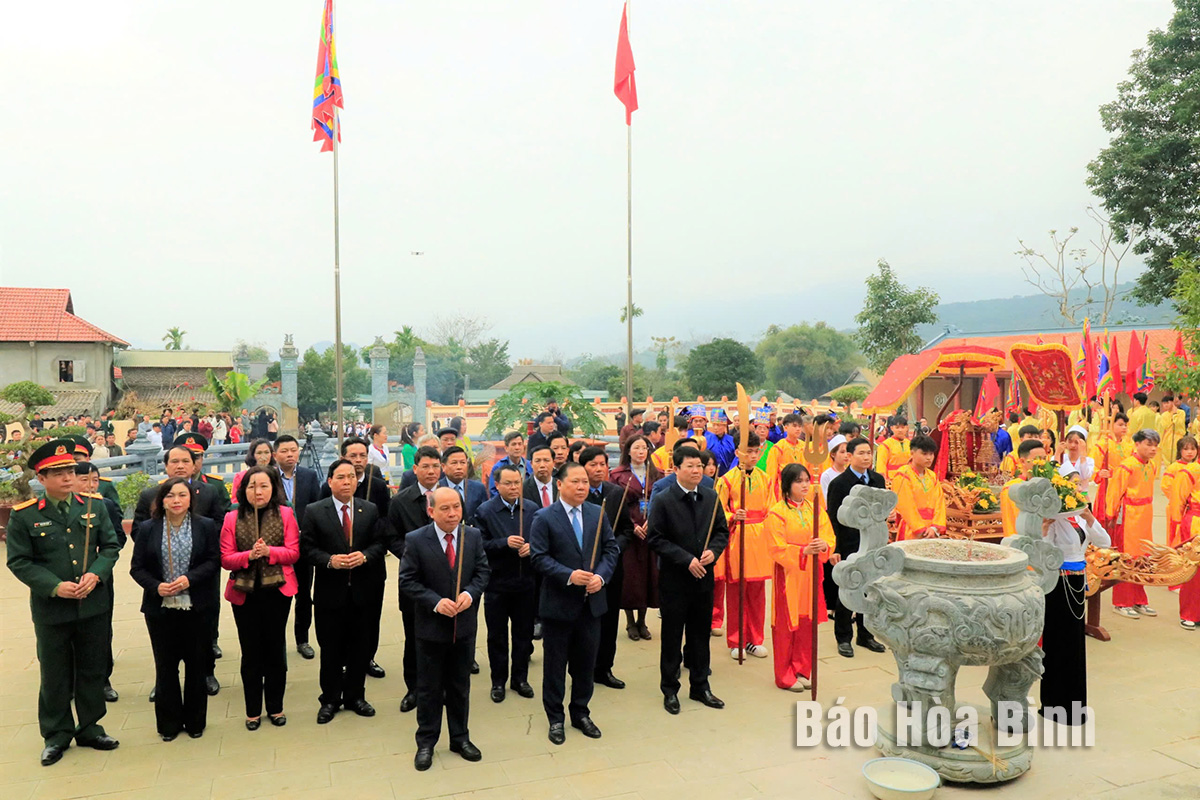

Provincial leaders and delegates perform an incense offering ritual at the Quoc Mau Hoang Ba shrine in Luy Ai hamlet, Phong Phu commune, Tan Lac district.

The ceremonial procession carries the palanquin of Quoc Mau Hoang Ba from Luy Ai hamlet to the Phong Phu Stadium in Tan Lac district.
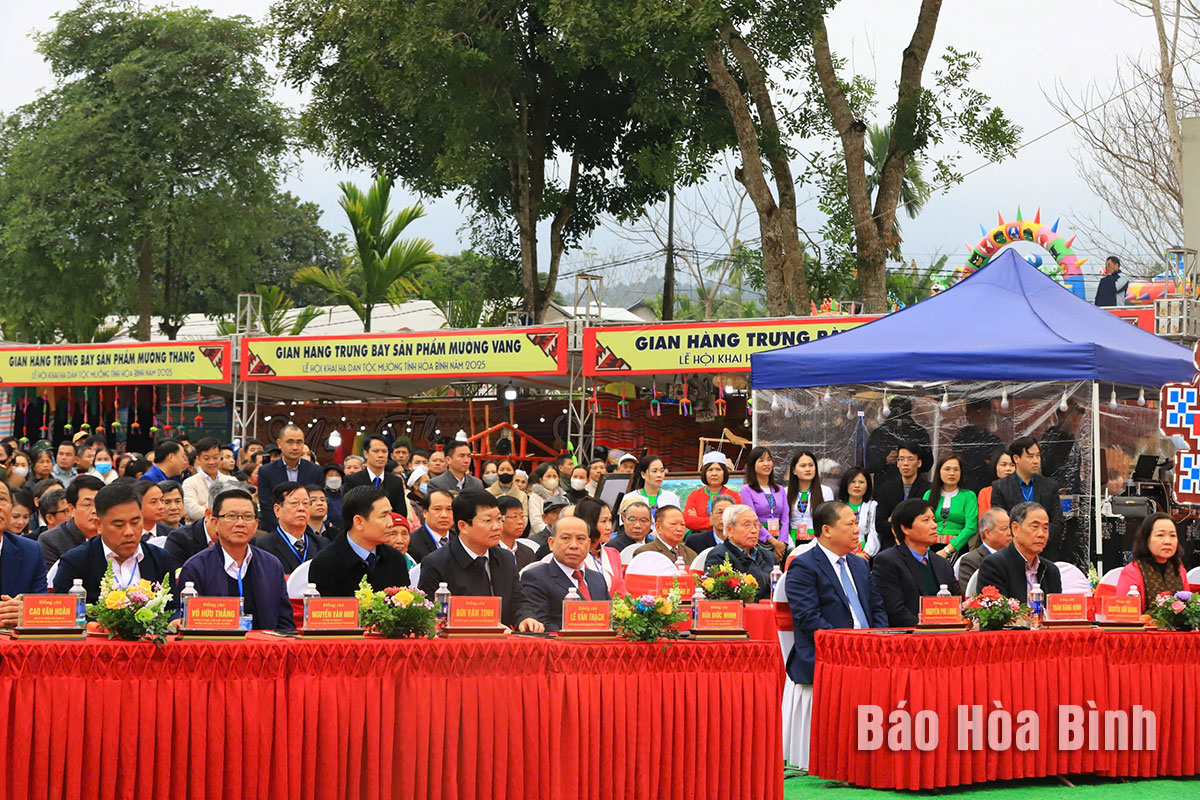
Delegates attend the opening ceremony of the festival.
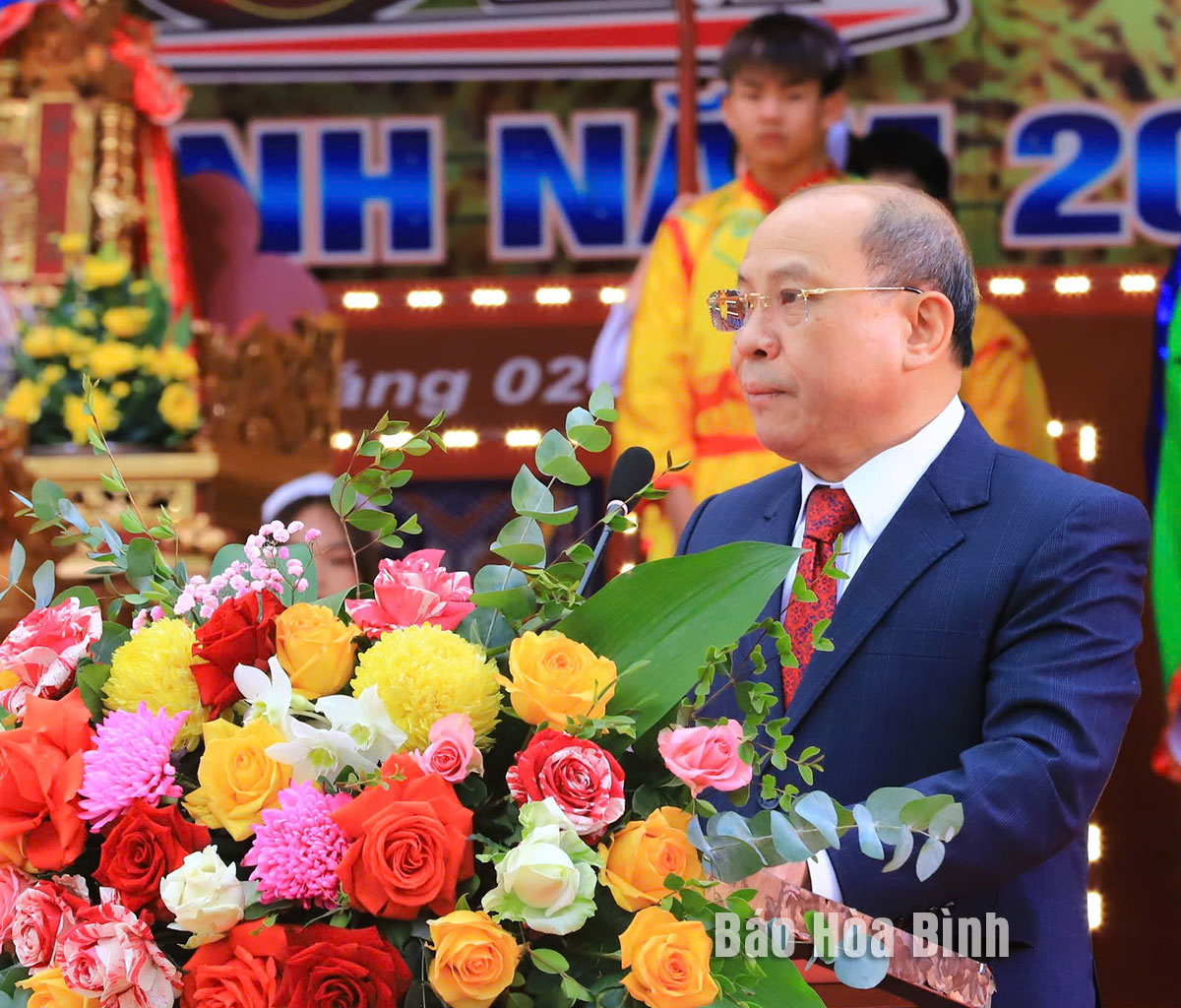
Bui Duc Hinh, Standing Deputy Secretary of the provincial Party Committee and Chairman of the provincial People’s Committee, delivers the opening speech at the festival.
In his remarks, Hinh stressed that the Khai Ha festival is the largest and most significant traditional festival of the Muong people in Hoa Binh. Closely tied to wet-rice agriculture, it reflects Vietnamese ancient civilisation and serves as a vital cultural and spiritual practice for the ethnic community, particularly in the four major Muong regions of Bi, Vang, Thang, and Dong. The festival is held to pay tribute to deities, honour ancestors who founded the land, and pray for favourable weather, bountiful harvests, and prosperity. In each Muong region, it is held at different times and locations. Since 2023, the event has been celebrated on a provincial scale.

Nguyen Phi Long, alternate member of the Party Central Committee and Secretary of the provincial Party Committee, beats the ceremonial drum to kick off the festival.
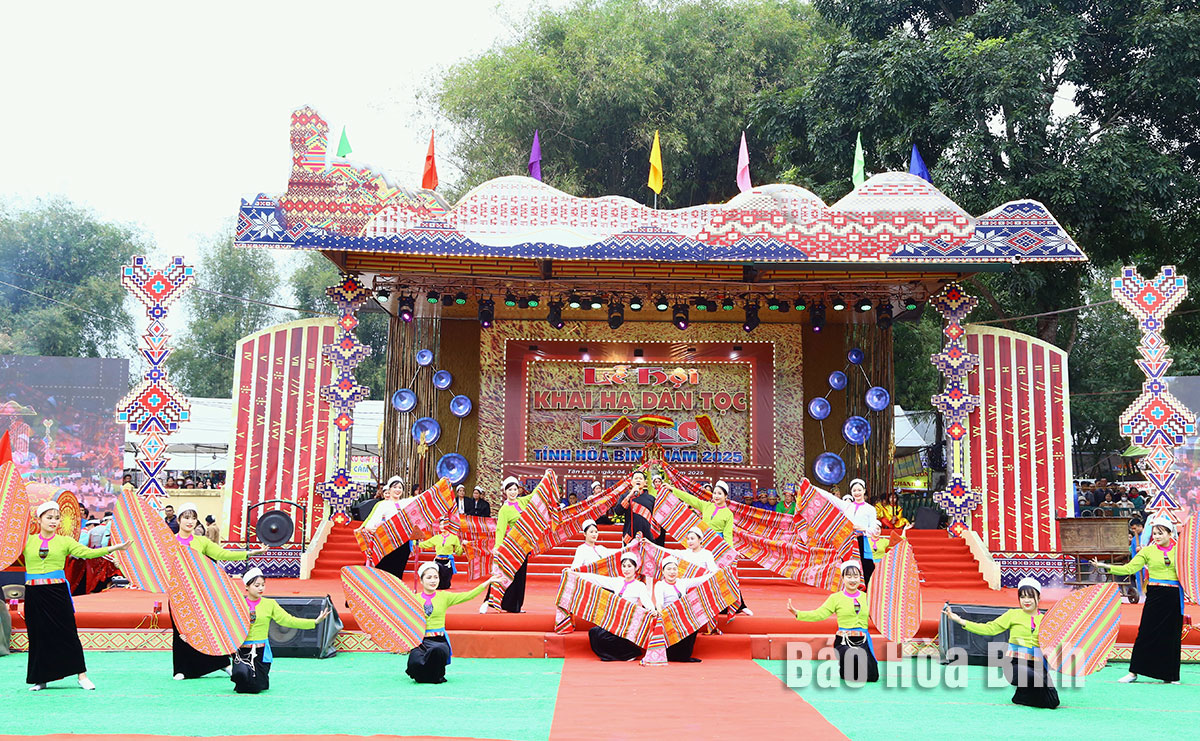
A vibrant artistic performance celebrating the festival.
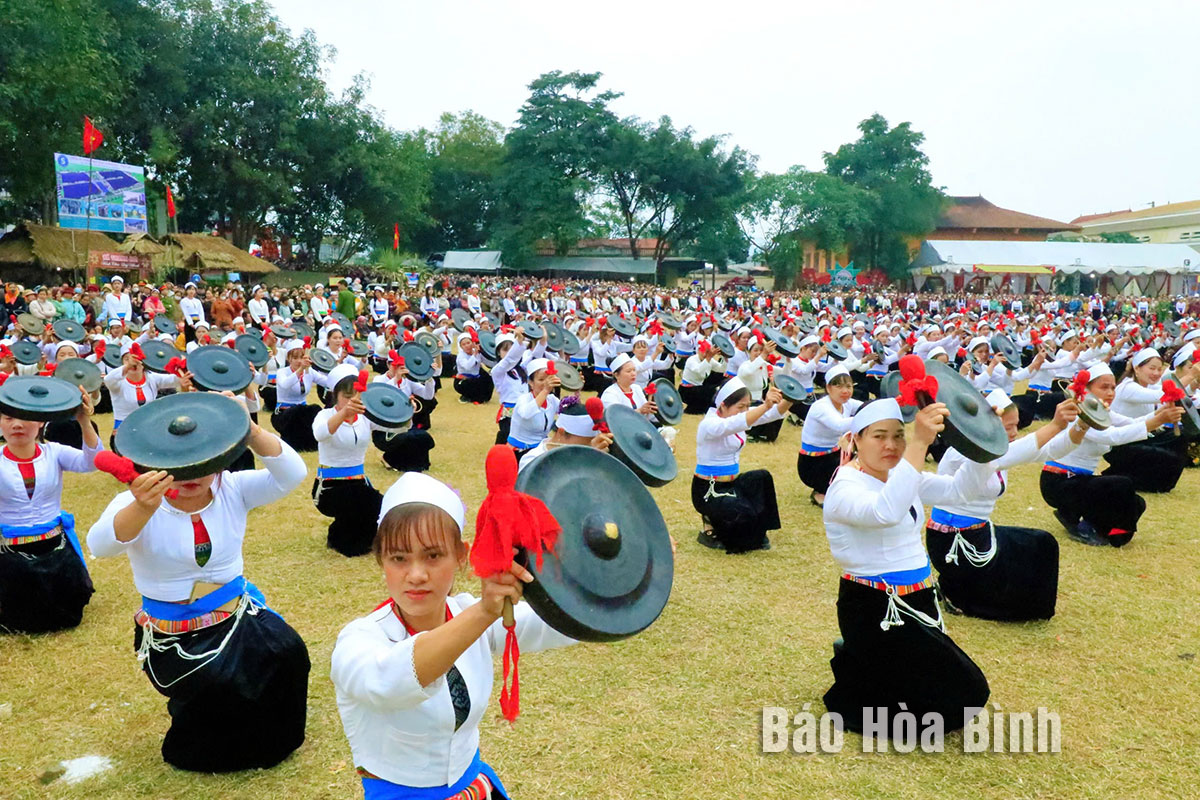
More than 500 performers and artisans participate in a traditional Muong gong ensemble.
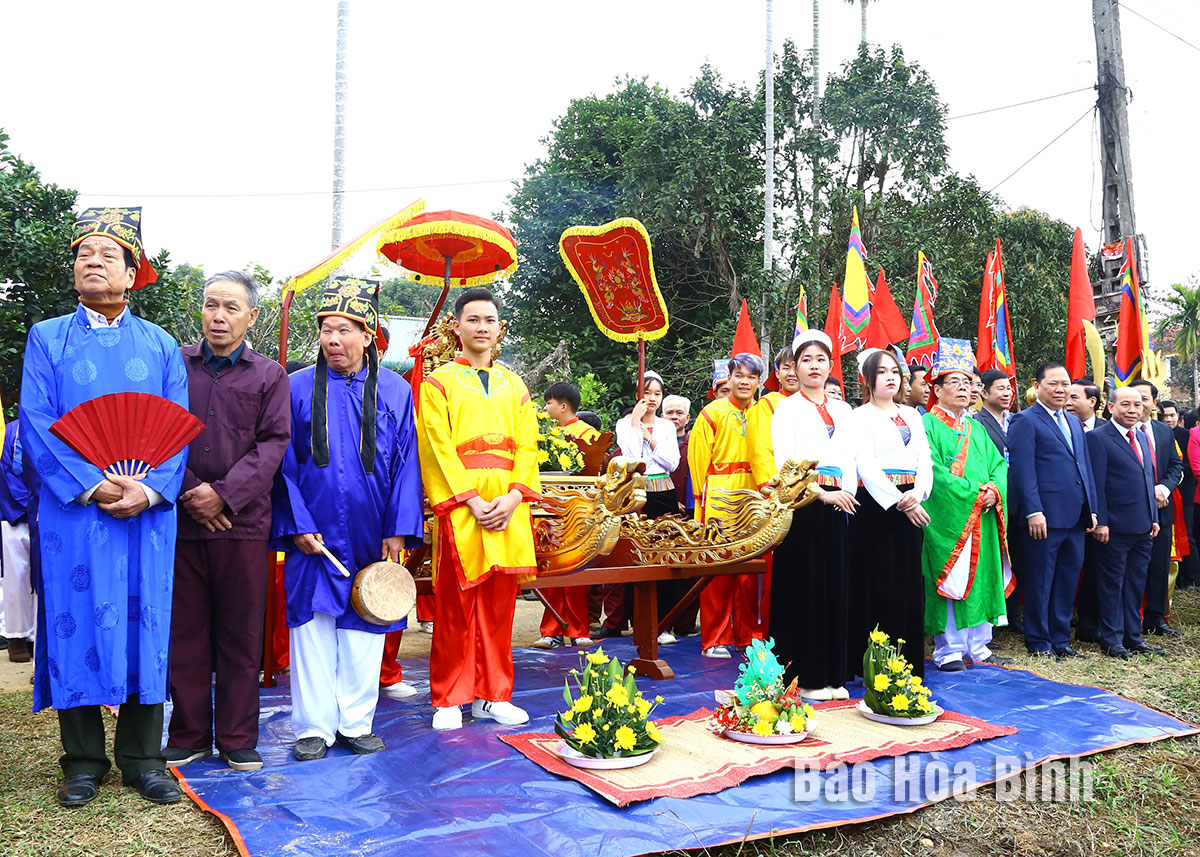
Delegates take part in the symbolic spring plowing and rice transplanting ritual.
Hinh affirmed that the annual Muong Khai Ha festival serves as a means to educate future generations on patriotism and national pride. It also promotes historical and cultural values while raising awareness about the preservation and development of ethnic cultural identity. By integrating these traditions with the growth of unique tourism products, the festival aims to make culture a true spiritual foundation, an internal driving force, and a catalyst for development.
Nguyen Phi Long, Secretary of the provincial Party Committee, struck the ceremonial drum to declare the opening of the festival. A spectacular cultural performance followed, featuring over 500 Muong gong performers and 100 folk artists from various communes in Tan Lac district.
The two-day festival (February 4 and 5) featured a vibrant mix of traditional customs, cultural showcases, and sports competitions. The festival commenced with a ritual offering ceremony at the Quoc Mau Hoang Ba shrine in Luy Ai hamlet, followed by a procession of the deity’s palanquin to the festival revenue. At the Phong Phu Stadium, the ceremonial rituals, including an ensemble of Muong gongs, took place, setting the stage for the grand opening of the festival. Then delegates and locals joined the symbolic tradition of going down to the field at the beginning of spring.

Locals head to the field for traditional early spring plowing and rice transplanting.
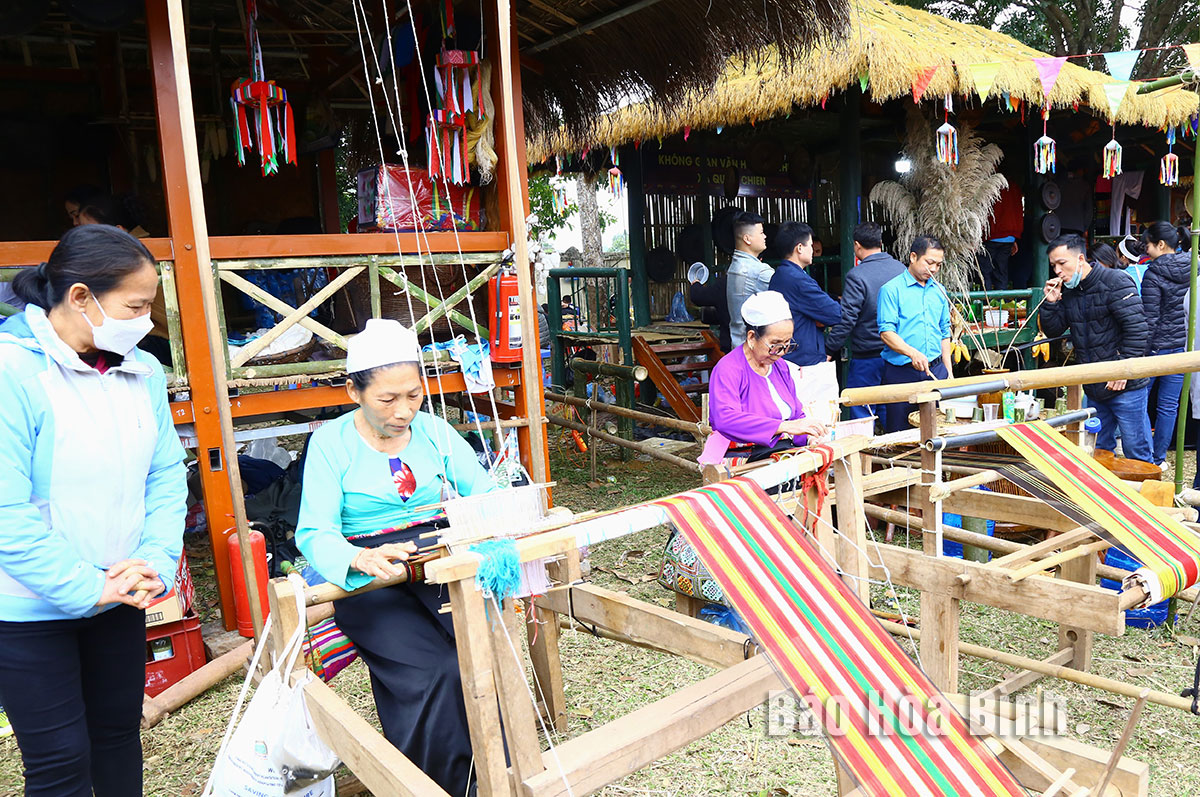
Visitors experience the cultural pavilions of communes and towns in Tan Lac during the festival.
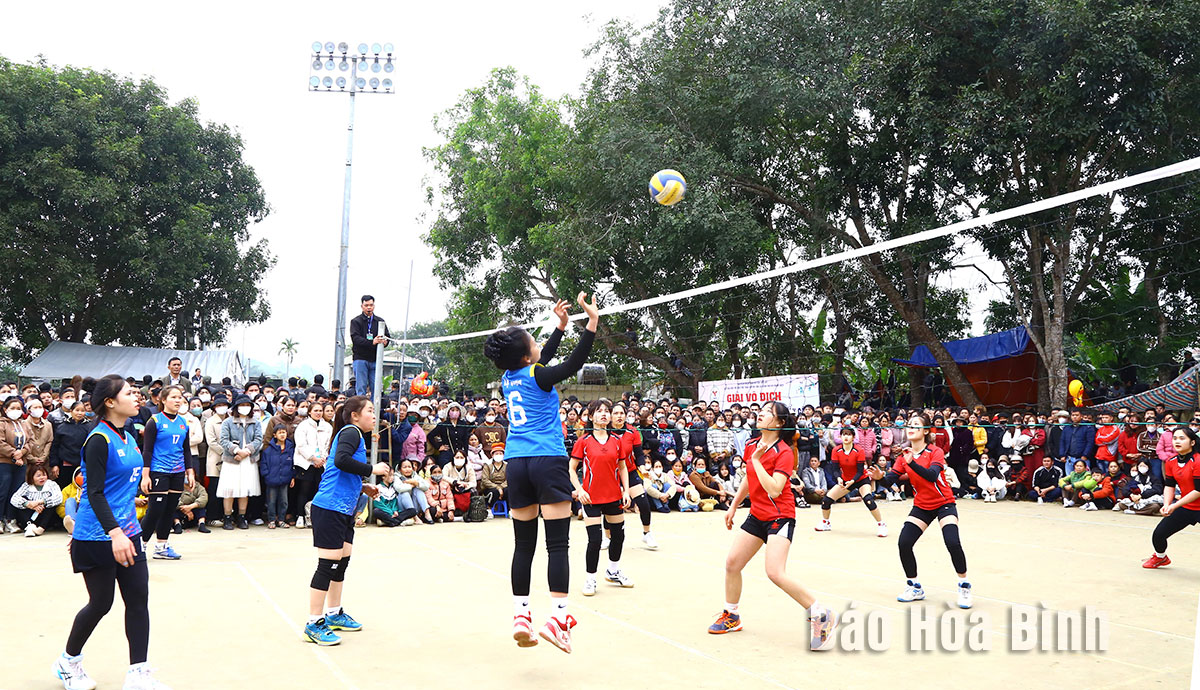
A volleyball match takes place as part of the festival.
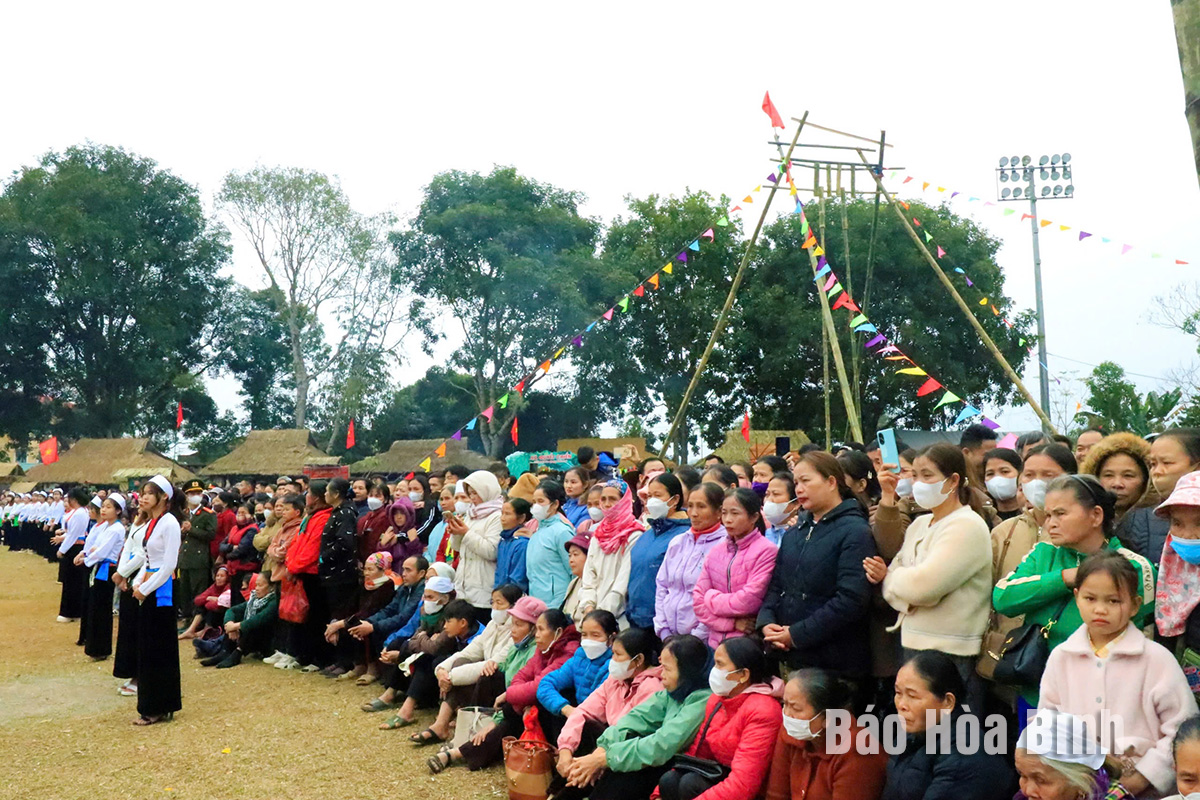
A large number of people enthusiastically participate in the festivities.
The occasion offered a range of festive events that showcased culinary specialties, brocade weaving performances, folk games, as well as sports and singing competitions, among many others. There were also OCOP and agricultural product displays featuring local specialties and handicrafts from the four Muong regions, and a job fair providing employment guidance and networking opportunities for attendees.